How to optimize Oracle NetSuite Invoice Management
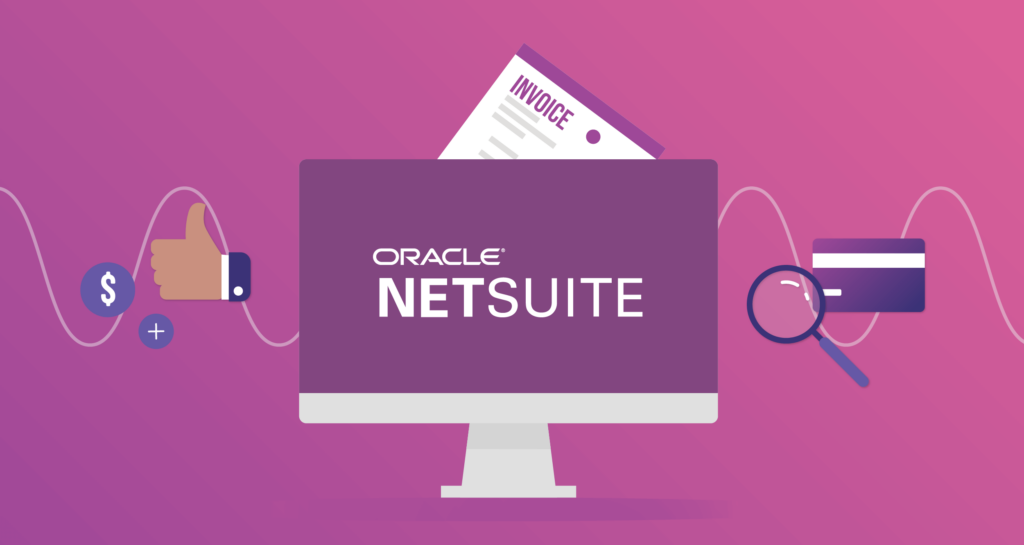
Are you considering using NetSuite to automate invoice processing?
Streamlining manual invoice processing workflows reduces costs and processing time, eliminates errors, gets vendors paid on time, and optimizes cash flow management.
If you use NetSuite cloud software, you already know it’s a powerful platform with a proven track record of helping companies save money and increase efficiency. You may want to maximize your investment by adding invoice processing functionality. Alternatively, you may be considering NetSuite as an ERP solution and are wondering about its AP automation capabilities.
As you’ll see, automating invoice processing in NetSuite is a good solution for smaller companies. However, NetSuite’s AP automation module may not have the flexibility and capability a growing business needs. An integrated AP automation solution can augment NetSuite’s power by automating invoice management while supporting NetSuite’s full functionality.
Read this guide to learn if NetSuite invoice processing is the right AP automation solution for your business. We’ll explain NetSuite’s invoice management workflow, share the challenges real NetSuite users experience, and explore the benefits of using an integrated AP automation solution.
Challenges NetSuite invoice management solves
Oracle NetSuite is a powerful and flexible solution for automating core business processes. It’s also popular — in a 2023 survey by Stampli and Probolsky Research, over 18% of businesses with 500+ employees said they use NetSuite as their primary ERP.
NetSuite invoice management software combines several functions of NetSuite’s accounts payable automation platform and other modules to automate core invoice processing tasks. It leverages NetSuite’s functionality to provide simple vendor bill management services to NetSuite customers.
Invoice Management is part of the NetSuite Application Suite in AP Automation. The solution processes vendor invoices in six steps:
- Vendor bill capture and data entry
- Vendor bill review
- Invoice matching and verification
- Bill approvals
- Bill payment
- Payment reconciliation
Let’s look at these steps in more detail.
NetSuite ERP invoice automation and AP workflows
In this podcast, Ben Murray, Founder of The SaaS CFO, and Simone Nardi, CFO at G-P, discussed how companies can adapt their finance processes as they do business in new markets and locations. Many fast-growing companies choose NetSuite ERP because it has the flexibility and power to adapt as their business needs change. To illustrate the NetSuite invoice management workflow, we’ll use a fictional company (BTB Healthcare). BTB is rapidly expanding into global markets and needs a centralized invoice processing system to unify its diverse AP processes.
Bill is the founder and CFO of BTB Healthcare, a health services company operating in the US and abroad. BTB provides AI-powered analytics software that helps medical practitioners diagnose and treat rare diseases.
BTB operates several national and international subsidiaries, each with its own financial system. Its financial operations are centralized in a US holding company, and it uses NetSuite ERP and NetSuite OneWorld in its head office to manage financial processes.
BTB’s subsidiaries use various other ERP systems and manage their own AP processes. Bill’s goal is to move to a centralized accounts payable and vendor payment solution that will streamline current processes. The solution must also allow BTB’s subsidiaries to continue managing payments to local vendors while ensuring all payment data is synchronized with the central system. Bill is considering using NetSuite Invoice Management but is also looking at third-party AP automation solutions.
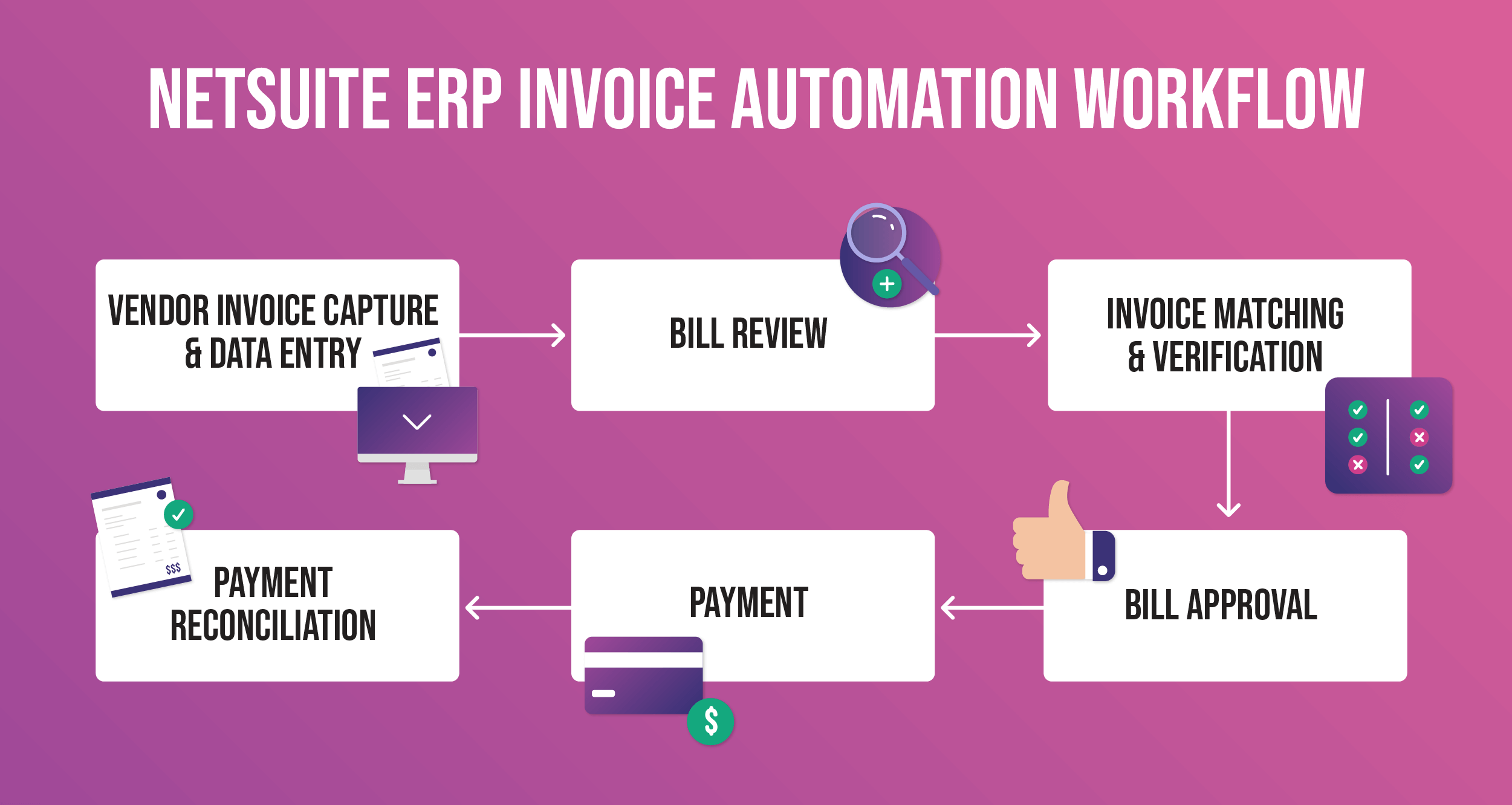
Because of its business structure and operations, BTB has specific needs for processing invoices:
Flexible payment options for international business
For regulatory reasons, many of BTB’s international subsidiaries pay their vendors locally. They need a supplier payment solution that supports multiple subsidiaries, locations, and currencies.
ERP platform independence
BTB’s subsidiaries operate multiple ERPs. Bill needs a platform that can easily integrate and share data with several ERP systems while giving his AP team, located in BTB’s head office, oversight and control over all AP processes.
Minimal IT investment
After a round of acquisitions, BTB is trying to reduce expenditures. They would prefer an invoice management solution that can be implemented with minimal coding and development.
With these factors in mind, here is how the NetSuite invoice management process would look for BTB.
Step 1: Vendor bill capture and data entry
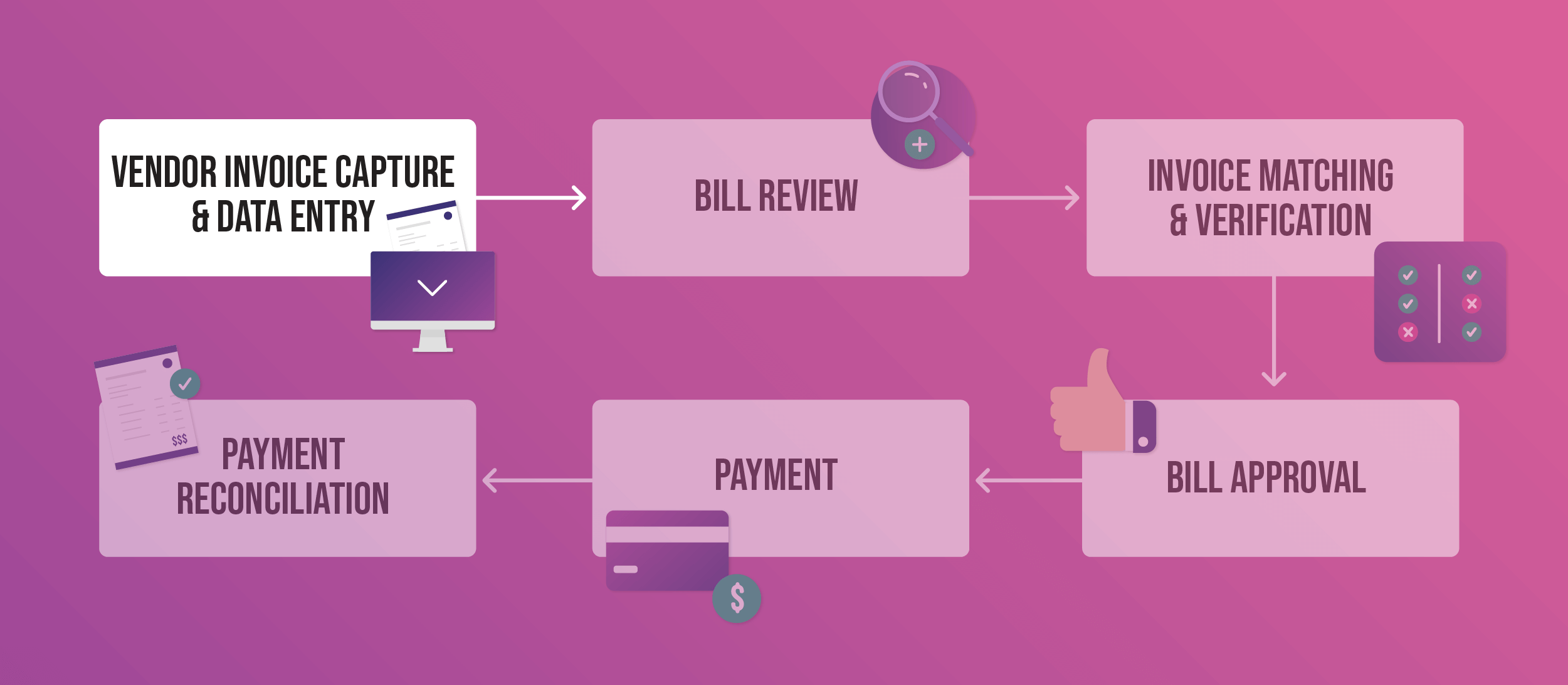
Users can enter vendor invoices into NetSuite in several ways. For paper invoices, they must manually create an invoice in NetSuite. Vendors can send digital invoices directly to a central email address, or AP staff can use File Explorer or drag-and-drop bills directly into NetSuite Bill Capture. NetSuite’s OCR capability also allows for scanning, digitizing, and uploading paper invoices.
Once an invoice is uploaded, the platform automatically scans it, creates a bill record in NetSuite, and links the bill record to the purchase order. After it has been uploaded, the scanned invoice can be located on the Scanned Vendor Bills screen.
From here, you can click on the scanned bill to open the Review Bill screen.
Step 2: Bill review
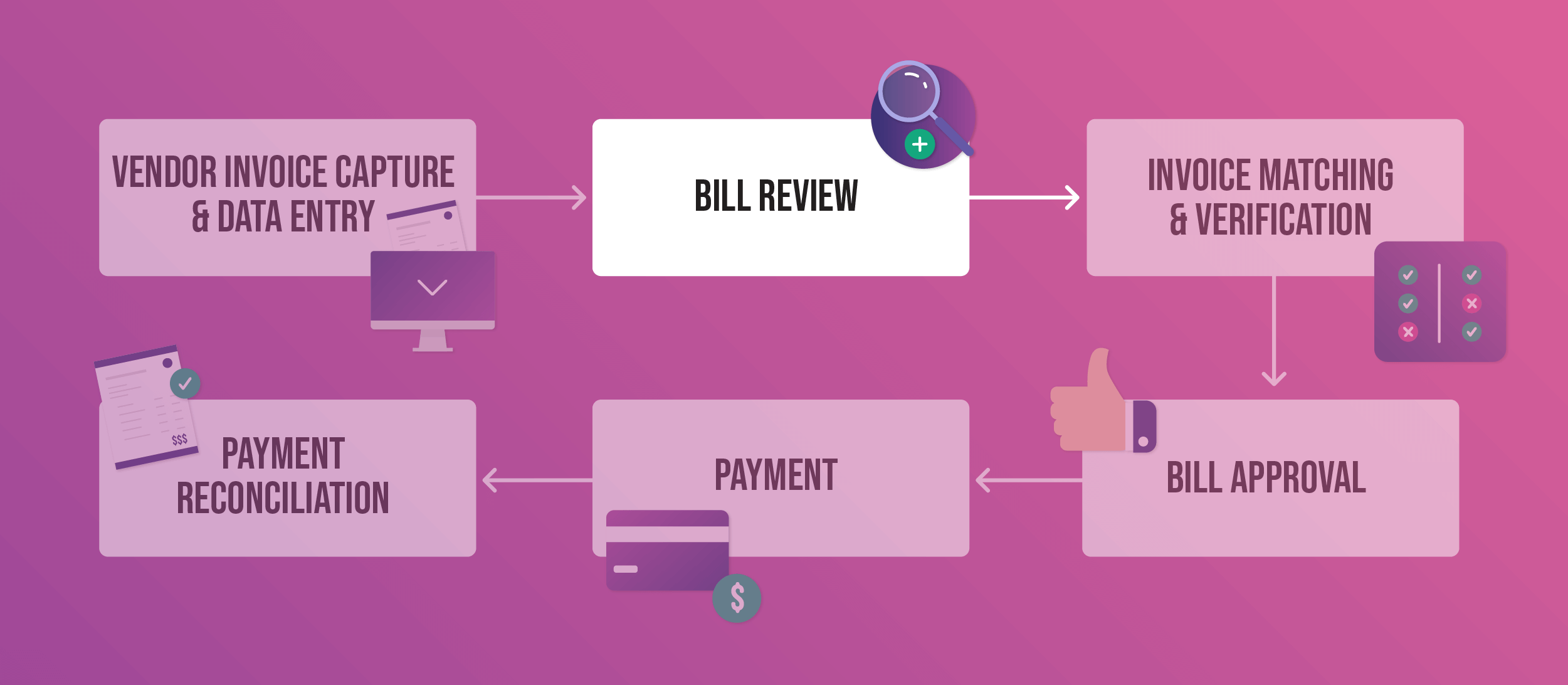
The Review Scanned Bill screen shows the scanned invoice on the left and the vendor bill on the right. NetSuite automatically imports invoice details like vendor name, invoice number, date, and line items from the scanned invoice into the vendor bill. The system also imports the vendor’s information from the NetSuite Vendor Record.
At this stage, BTB’s AP team confirms the invoice details and makes any necessary corrections to the vendor bill. If the invoice contains an expense not included in the PO, users can manually add the expense to the vendor bill.
Step 3: Invoice matching and verification
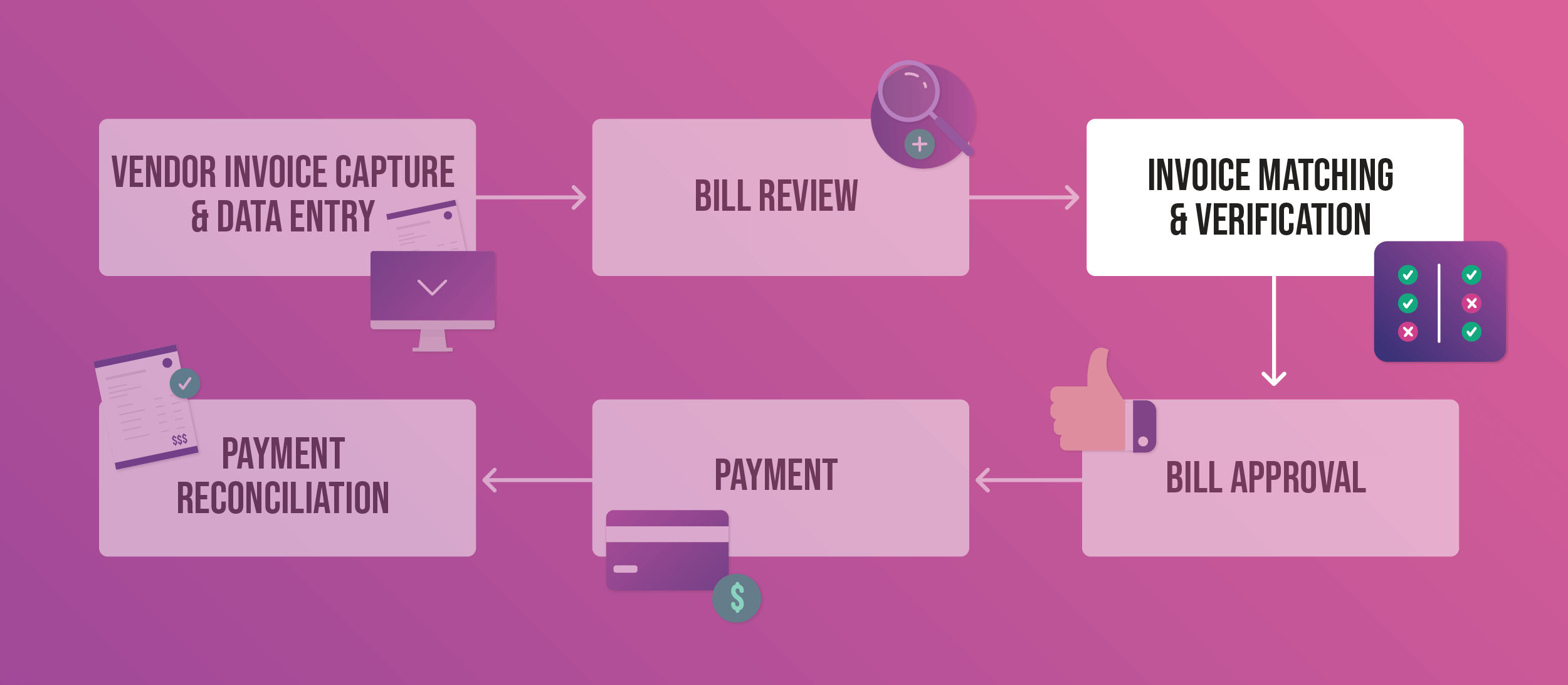
When NetSuite matches a scanned invoice to a purchase order, the system automatically matches the line items to the associated PO. Then, it suggests GL codes for the line items on the invoice, performs two-way matching, and flags discrepancies for the AP team. Note: to perform three-way matching between the invoice, PO, and shipping receipt, you must purchase and install the optional NetSuite Approvals Workflow SuiteApp.
After making the necessary corrections and verifying the invoice, the user can post the bill for approval and payment. To post the bill, they select the location in the Review Scanned Bill screen and then click Create Bill.
Once the bill is posted, it moves on to Approval and Payment.
Step 4: Invoice approval
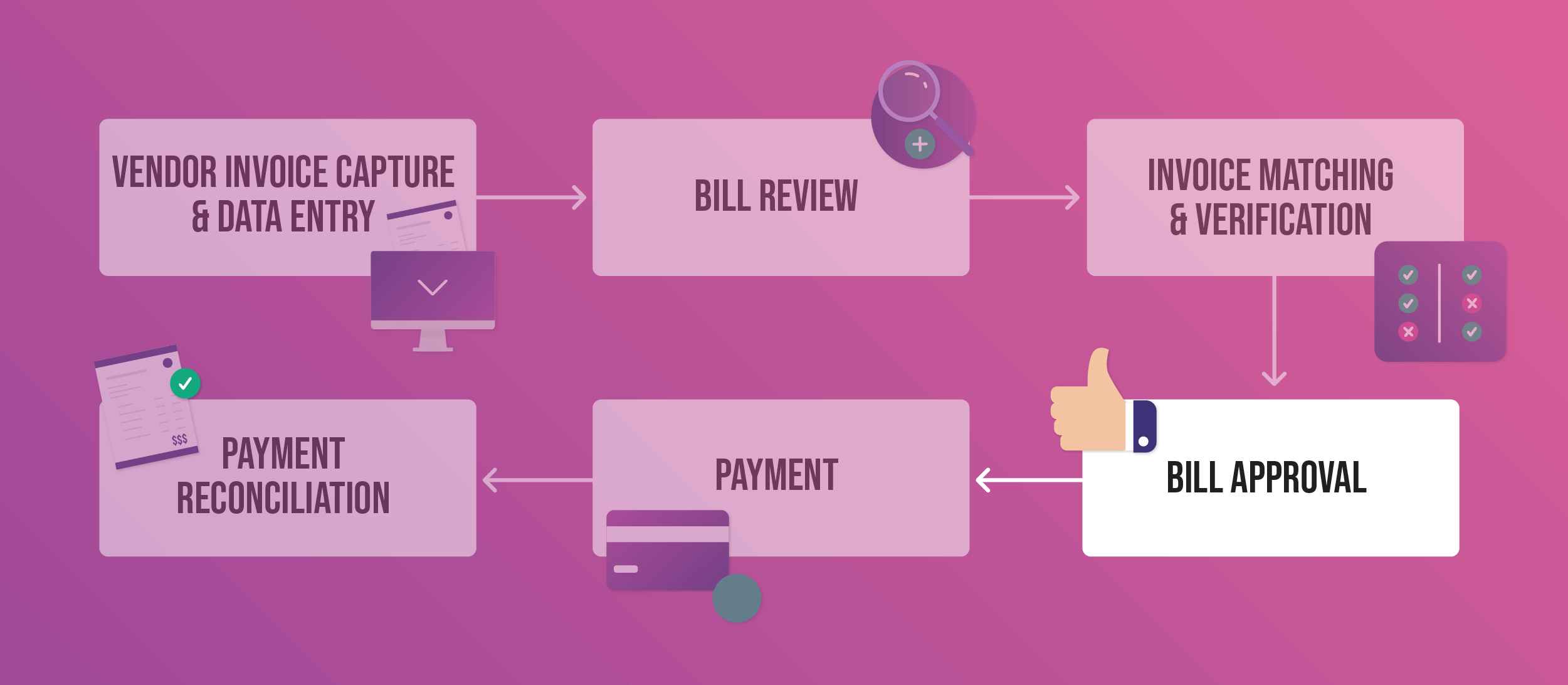
After the vendor bill has been posted, it’s ready for approval. In NetSuite’s basic invoice approval workflow, approvers can go to the bill list, select the bill to be approved, review the bill, and then change the approval status to Approved.
NetSuite customers can automate the bill approval process by adding the optional SuiteApprovals SuiteApp. SuiteApprovals is also needed to add automated approval workflows, routing, and rules, such as adding multiple approvers or batch approvals.
After the vendor bill is approved, it can be paid in the Payments screen.
Step 5: Payments
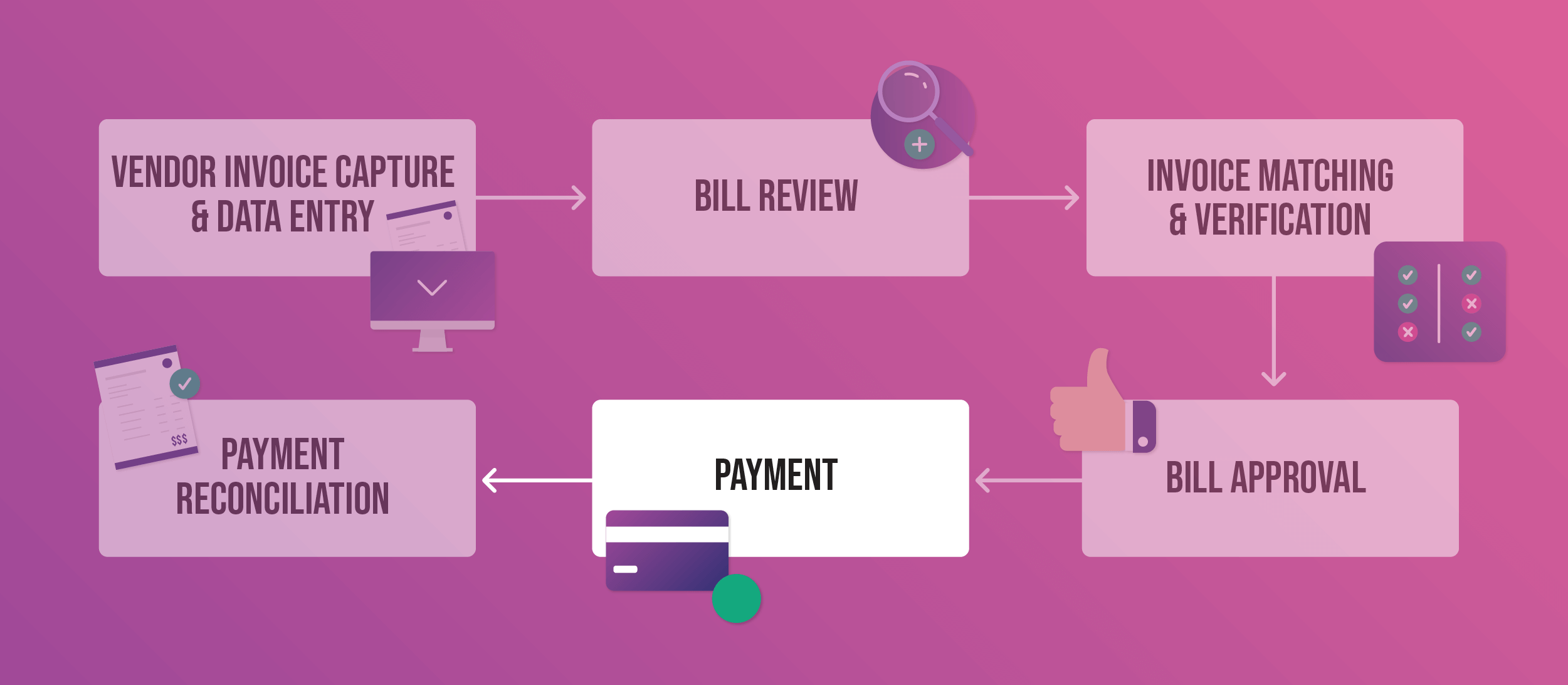
BTB can use the built-in vendor payments to pay its vendor bills in the NetSuite invoice management system. When a bill has been approved, the finance team opens the bill in NetSuite, checks the payment details, and makes payment. NetSuite supports individual or batch payments with ACH, paper checks, or HSBC virtual credit card.
NetSuite’s vendor payment solution is offered in partnership with HSBC. Because BTB business doesn’t use HSBC for banking, they would need to set up auto funding (through the Bank Accounts screen) to fund an HSBC account before we can pay vendors.
For example, to make an ACH payment, users go to the payments window, select the bills they want to pay, enter the amount they want to pay, and choose the payment type. Then they submit the ACH file to HSBC to be processed.
Step 6: Payment reconciliation
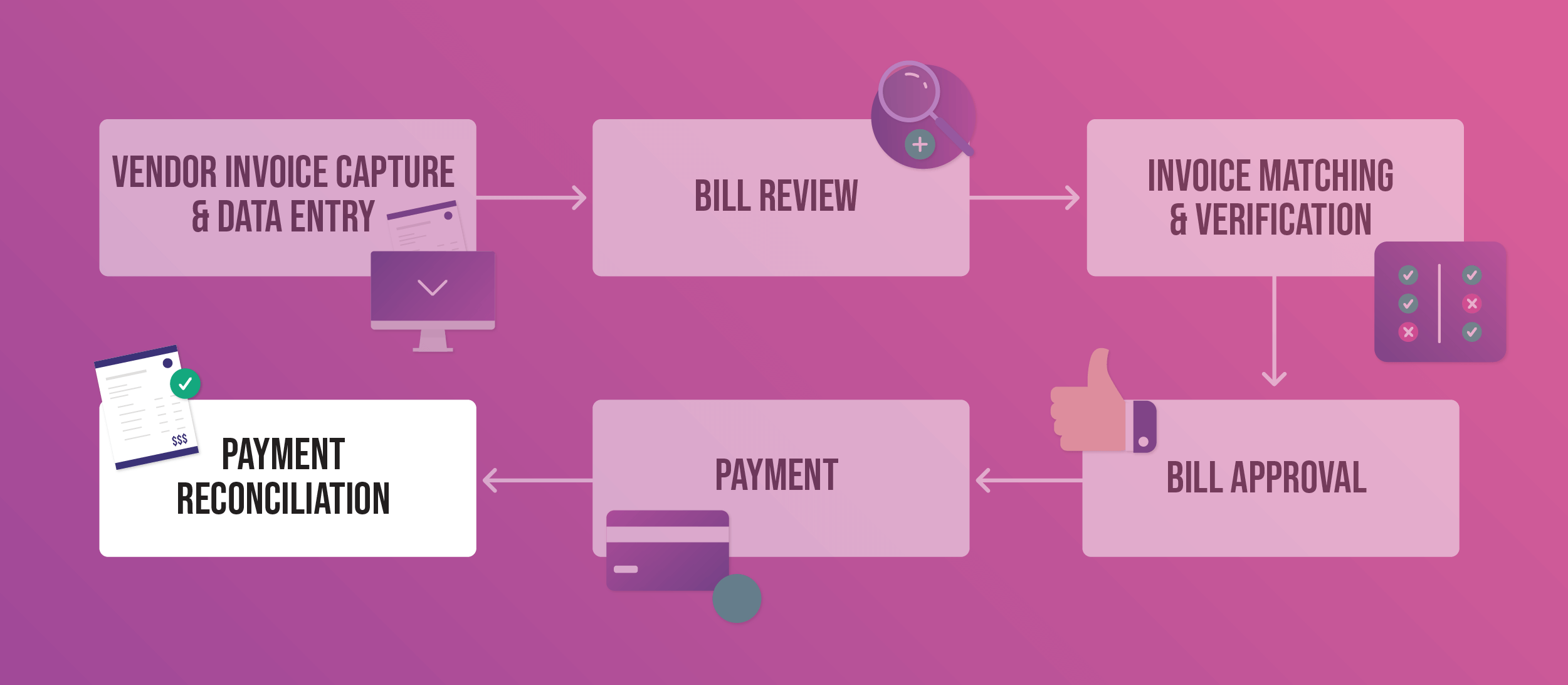
Finally, BTB can use NetSuite to reconcile its vendor payments. NetSuite downloads daily payment records and monthly bank statements from HSBC. The system automatically matches virtual credit card charges and flags any discrepancies for BTB’s AP team.
Bottom line
Although NetSuite invoice management is a good accounts payable solution, it doesn’t meet BTB’s specific needs. They need a solution that provides a higher level of flexibility and support for their subsidiary operations.
Let’s look at some of the other challenges BTB identified with automating their invoice processes with NetSuite.
Disadvantages of NetSuite invoice processing
While NetSuite invoice management provides basic invoice processing automation, it didn’t meet some of BTB’s requirements.
Let’s break these challenges down.
Lack of international multi-subsidiary accounts payable support
One of BTB’s primary concerns was that NetSuite’s payment automation solution was tied to HSBC. BTB needed a platform-independent solution with flexibility in payment methods and currencies. NetSuite’s payment automation solution only offers payments via ACH, check, and virtual credit card (HSBC Mastercard) and only makes payments in USD. It also doesn’t offer multi-subsidiary support outside the US. Additionally, HSBC charges transaction fees in addition to the fees BTB would already be paying NetSuite for using the platform.
Real-world NetSuite customers complain that NetSuite’s OneWorld platform doesn’t fully support multi-subsidiary companies. One enterprise customer said, “There are some capabilities for multi-subsidiary companies that are not fully developed yet. NetSuite’s OneWorld platform is designed to allow accounting for multiple companies, locations, languages and currencies and consolidate reporting on multiple levels as needed. Intercompany transactions have been automated somewhat, and elimination entries can be generated by the system. However, there is no intercompany bank transfer functionality, which is necessary as many companies sweep bank accounts of subsidiaries into a corporate level account for cash management.”
With built-in OneWorld support, Stampli lets businesses manage multiple subsidiaries from a single Stampli account — significantly streamlining multi-subsidiary accounts payable processes. One customer describes how Stampli has simplified multi-subsidiary accounting for their business: “Stampli has allowed our company to implement a simple, yet efficient workflow process allowing each of our subsidiaries to approve/reject/amend invoices that are then loaded into our accounting system, Netsuite. The Stampli team worked quickly to resolve any issues we had initially and are now running without any hiccups. The application has saved us many, many hours in manual input of invoices.”
No payment platform independence
NetSuite Invoice Management is only available within the NetSuite environment. Because some of BTB’s subsidiaries operate their own ERP systems, they needed an invoice management solution that isn’t linked to a specific ERP solution. After considering this, BTB decided that a platform-independent AP automation solution that offers NetSuite integration was a better fit for their needs.
Many financial automation platforms claim to integrate with multiple ERPs, but only Stampli offers pre-built integrations that support the native functionality of over 70 ERP systems. One customer describes how integrating Stampli with their ERPs has given them more visibility into their AP workflows: “Stampli is able to process all of our Invoices and [is] continuously talking with our ERP systems. Most of the time what we have processed in Stampli is able to see in ERP system with in 1 to 2 minute. very user friendly as well.”
Adding features requires IT development and rework
The core NetSuite Invoice Management solution doesn’t support features like 3-way matching and advanced invoice workflows. To add more functionality, BTB would need to add NetSuite SuiteApps or rework its existing NetSuite workflows and processes, which means tying up IT resources. Because they are trying to minimize IT spending, they’d prefer a solution with advanced functionality already built in.
Stampli can be implemented in days with no ERP rework or changes to your existing processes, and it features customizable workflows that adapt as your business evolves. “Stampli automated a workflow for us that had previously become an excessive waste of time for an otherwise simple process,” said one Stampli customer. “As a national company, it helped integrate our teams around accuracy, timing, and process for approvals. Being able to pre-program the workflows make us less error prone, and I especially love how it tracks issues across a period of time for all of the different filters that allow me to narrow in on issues.
…Approvals for our companies are complex. We probably have 100s of approval workflows for different types of invoices, subconsultants, and partners. It reduces errors for us, primarily.”
The bottom line: flexibility and freedom is more important
The bottom line was that BTB needed a solution that didn’t tie them to a single provider and was flexible enough to handle their needs. After considering their options, they concluded that Stampli was the best fit for their business. Let’s see why.
Optimize NetSuite invoice processing solution with Stampli
With Stampli’s end-to-end AP automation solution, BTB gains complete control over invoice processing. It gives BTB the power to manage multiple subsidiaries and locations, ensuring centralized oversight. Also, only Stampli has pre-built integrations that support the full functionality of NetSuite and the other ERPs in BTB’s organization. It allows BTB to centralize AP processing while allowing their subsidiaries to pay their vendors locally.
Stampli also gives BTB freedom – it’s platform-agnostic, so BTB can use whatever payment provider or ERP system they choose. With proven industry-leading expertise and experience, Stampli is BTB’s ideal accounts payable partner.
“Stampli: the best A/P software I’ve ever used”
“My finance team knows how much I love Stampli because I sing its praises so often,” says a staff accountant. “I’m an A/P team of one in a fast growing startup. We recently outgrew our old system and needed to look for something affordable and scalable that would interrupt our day-to-day operations as little as possible.
That’s when we found Stampli. It’s incredibly easy to use, allows me to keep up with A/P on my own thanks to my buddy Billy the Bot. Implementation was quick and quite easy, and while we don’t run into problems often, customer support is always super fast to respond and kind to explain what’s happening and how to resolve it.”
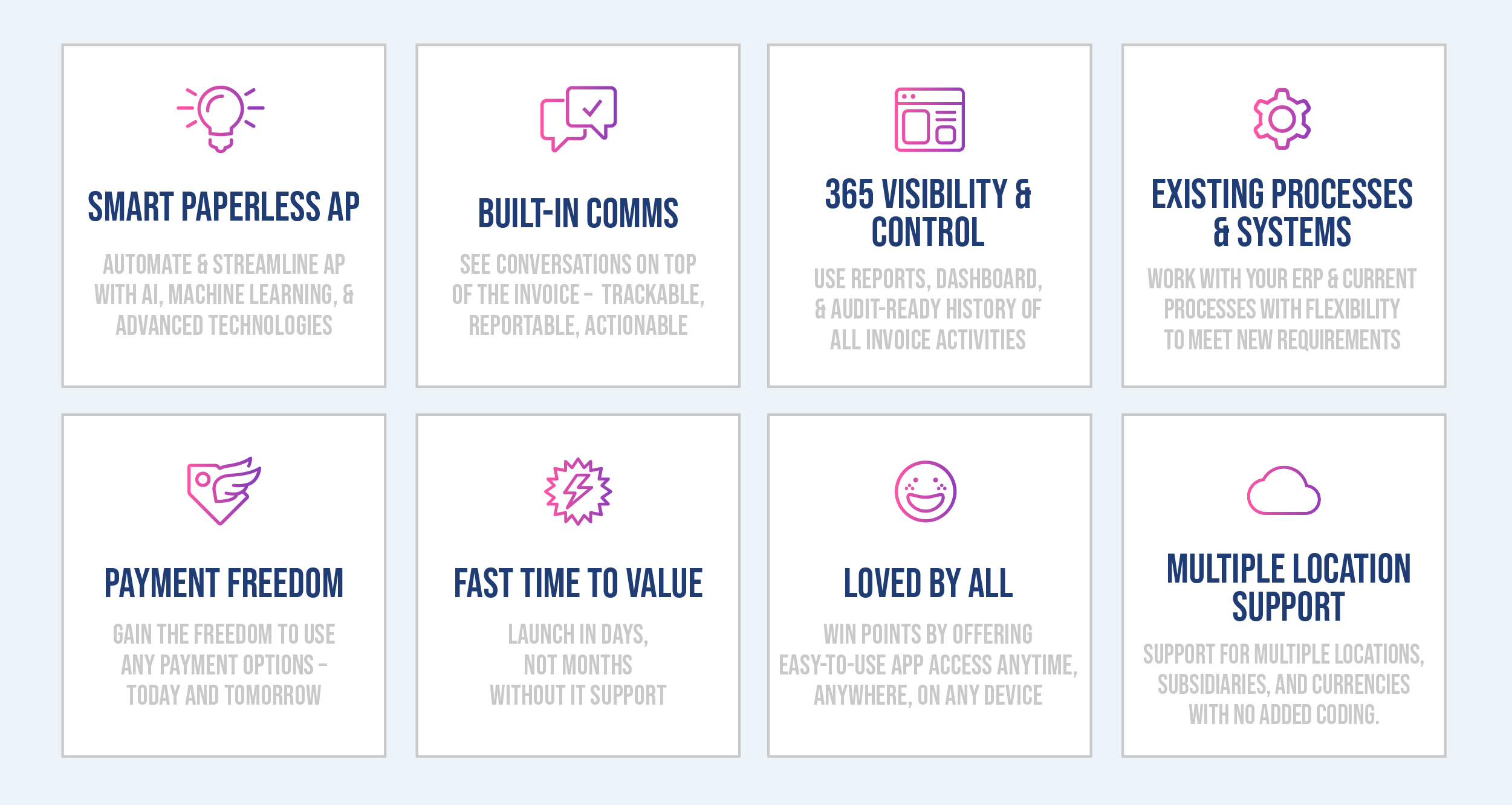
The leading NetSuite integration for AP automation
You may already know Stampli is the leader in the G2 Grid for AP automation software and has been rated #1 by users for Customer Support, Implementation, and Delivering Results.
Stampli offers built-in support for multiple approver workflows, multiple currencies and locations, and multiple subsidiaries – with no IT work needed. It also integrates seamlessly with NetSuite (and is Built For NetSuite (BFN) certified), so customers can be sure their central financial records are accurate and up to date in real-time.
“Stampli is easy to use and works well with our current AP software, NetSuite,” says a Stampli customer. “ The AP process is more streamlined and more efficient than NetSuite alone. The customer service bot responds promptly and always answers my questions.
…The AP automation is more efficient; it frees up my time to be more productive in other projects, and I accomplish more throughout the day. The Q&A section is easy to locate and has answers to most questions.”
Advanced NetSuite bill capture, coding, and three-way matching
Stampli uses OCR, machine learning, and AI to capture and code invoice data in real time. It learns your accounts payable processes, allows employees to scan and upload invoices from mobile devices, and lets vendors upload invoices directly from a built-in vendor portal.
Stampli also automatically matches invoices with POs and receipts and flags discrepancies in real-time – without any additional coding or rework in NetSuite. Stampli supports all line types – items, GL, charges, and resources – and syncs tax data and custom fields. It can also manage partial payment workflows, partial and multiple POs, and different tax codes.
One customer describes how Stampli has optimized and transformed their manual invoice processes: “Thanks to Stampli, we have been able to process invoices efficiently while significantly reducing the need for manual data entry. The tracking of approvals has become more transparent, and we have access to reports that enable us to clarify all account details with a high degree of accuracy.
Stampli makes it incredibly easy to reconcile and closely monitor all invoices in real-time while also ensuring timely approvals. The approval process is not only efficient but also highly accurate, with the added benefit of a feedback section that enhances accountability. With Stampli, it’s possible to extract invoice data and match it with relevant purchase orders and receipts seamlessly.
Thanks to the complete digitization of invoices and the elimination of paper copies, we’ve been able to eradicate manual data entry altogether. The central dashboard is yet another powerful feature that enables us to manage and track invoices with ease, providing instant visibility into the status of account.”
Flexible payment processing
Stampli Direct Pay gives complete control and visibility over vendor payments. You can choose to pay vendors through Direct Pay or use your own payment solution – a degree of freedom customers appreciate when dealing with multiple subsidiaries and locations. Direct Pay also gives AP teams visibility into every transaction so they can centralize internal controls, manage AP transactions, and optimize cash flow.
Stampli is the clear choice for a flexible and powerful invoice management solution. Contact our team today to set up a free demo and see how Stampli can empower your business.
